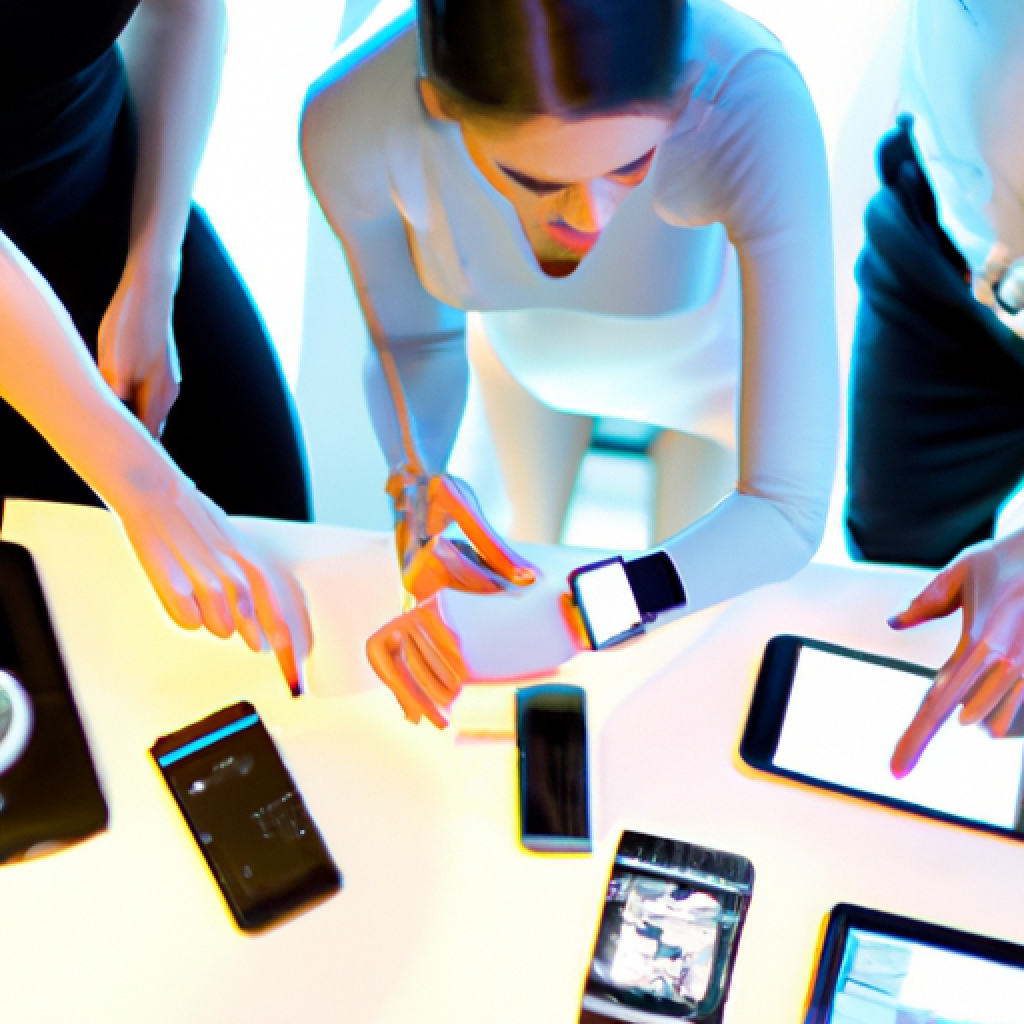What Are The 4 Wearable Devices?
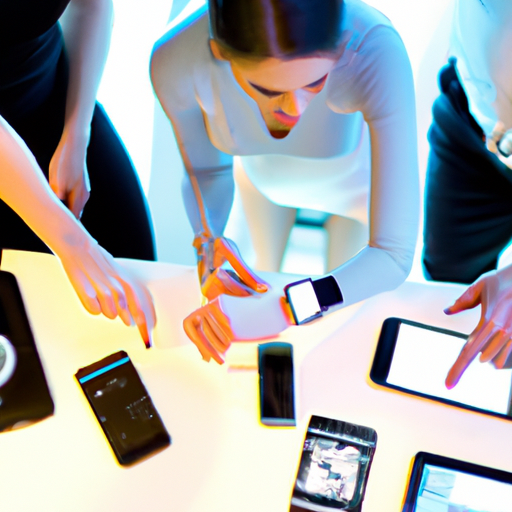
So, you’re curious about wearable devices, huh? Well, you’ve come to the right place. In this article, I’m going to give you the lowdown on the four most popular wearable devices out there. From fitness trackers to smartwatches, these devices are revolutionizing the way we interact with technology and making our lives a whole lot easier. So, grab a cup of coffee and get ready to find out what all the buzz is about when it comes to these handy gadgets.
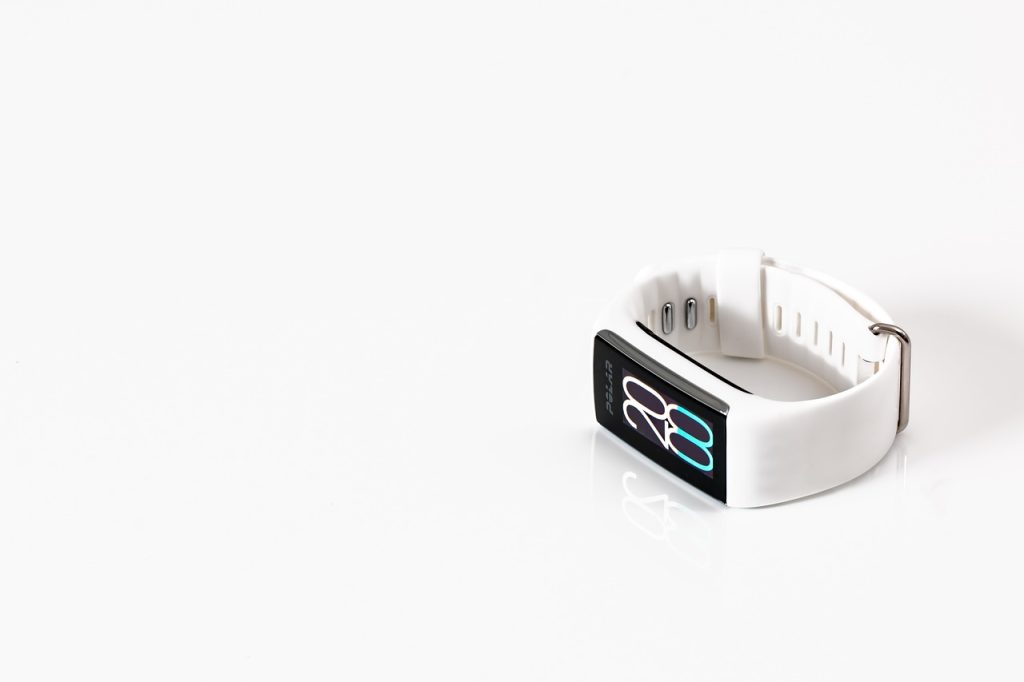
Defining Wearable Devices
Wearable devices are innovative technological gadgets that can be worn on the body or attached to clothing, offering a wide range of applications and functions. These compact devices are designed to provide convenience, accessibility, and enhanced capabilities for individuals. They have become increasingly popular in recent years, integrating technology seamlessly into our everyday lives.
Understanding Wearable Technology
Wearable technology refers to the devices that are worn on the body or integrated into clothing or accessories. These devices are equipped with sensors, processors, and wireless connectivity, allowing them to collect and transmit data, receive instructions, and perform various functions. Wearable technology has revolutionized the way we interact with our surroundings and has the potential to transform numerous industries, including healthcare, fitness, entertainment, and communication.
Applications and Functions of Wearable Devices
Wearable devices serve a multitude of purposes and offer a wide range of applications. From measuring our health and fitness to enhancing productivity and providing immersive experiences, these devices have become an integral part of our daily lives. Some common applications of wearable devices include:
-
Fitness and health tracking: Wearable devices such as fitness trackers and smartwatches monitor our physical activities, heart rate, sleep patterns, and provide valuable insights into our overall well-being.
-
Communication and productivity: Smartwatches and earbuds enable us to stay connected on the go, receive notifications, make calls, and even respond to messages without needing to take out our smartphones.
-
Entertainment and immersive experiences: Virtual reality headsets offer a truly immersive experience, transporting us to virtual worlds and revolutionizing gaming, multimedia, and even educational experiences.
-
Personal safety and security: Wearable devices like body-mounted cameras provide an added layer of security, enabling individuals to record their surroundings and ensure personal safety.
Evolution and Progress of Wearable Devices
Wearable devices have come a long way since their inception. From simple pedometers to sophisticated smartwatches and virtual reality headsets, these devices have undergone significant evolution in terms of design, functionality, and capabilities. The early days of wearable technology were primarily focused on fitness tracking, but advancements in technology have led to the development of more diverse and advanced devices.
Today, wearable devices are becoming increasingly integrated into our daily lives. They are smaller, more powerful, and equipped with a wider range of sensors and features. The evolution of wearable devices can be attributed to advancements in miniaturization, battery life, connectivity, and the growing demands and expectations of consumers.
Important Features of Wearable Devices
While the features and capabilities of different wearable devices vary, certain key features are essential for their success. These features include:
-
Comfort and ergonomics: Wearable devices must be comfortable to wear for extended periods without causing discomfort or irritation. Ergonomic and lightweight designs ensure a seamless user experience.
-
Durability and water resistance: Given that wearable devices are often worn during physical activities or in various environments, durability and water resistance are crucial to withstand daily wear and tear.
-
Long battery life and charging options: Wearable devices must have sufficient battery life to ensure uninterrupted use throughout the day. Additionally, convenient charging options, such as wireless charging, further enhance the user experience.
-
Connectivity and compatibility: Seamless connectivity with smartphones and other devices is essential for the proper functioning of wearable devices. Compatibility with different operating systems and devices ensures a wider user base.
-
Accuracy and reliability: Whether it’s tracking fitness metrics or monitoring health parameters, wearable devices must provide accurate and reliable data. This ensures that users can make informed decisions based on the information provided by these devices.
Fitness Trackers
Overview of Fitness Trackers
Fitness trackers are wearable devices designed to monitor and track various aspects of physical activities and overall fitness. These devices typically include sensors such as accelerometers, heart rate monitors, and GPS trackers to measure steps taken, heart rate, distance covered, calories burned, and other fitness-related metrics. With the ability to sync data to smartphone apps or computer software, fitness trackers provide valuable insights into one’s exercise routine and progress.
Most Popular Fitness Trackers
There are several popular fitness trackers available in the market today, each offering unique features and functionalities. Some of the most popular fitness trackers include:
-
Fitbit Charge: Fitbit Charge is a well-known fitness tracker brand that offers a range of trackers suitable for different fitness levels. Their devices provide comprehensive activity tracking, sleep monitoring, heart rate monitoring, and personalized coaching.
-
Garmin Vivosmart: Garmin Vivosmart offers a sleek and compact fitness tracker with advanced features like GPS tracking and smartphone notifications. It also provides fitness assessments, stress tracking, and automatic exercise detection.
-
Apple Watch: While primarily known as a smartwatch, the Apple Watch also incorporates powerful fitness tracking capabilities. It offers features such as heart rate monitoring, GPS tracking, workout tracking, and a variety of fitness apps.
Benefits of Using Fitness Trackers
Fitness trackers offer numerous benefits for individuals looking to improve their physical fitness and overall well-being. Some of the key benefits of using fitness trackers include:
-
Goal setting and motivation: Fitness trackers enable users to set personalized fitness goals and track their progress towards achieving them. This keeps users motivated and accountable for their exercise routines.
-
Activity tracking and analysis: Fitness trackers provide detailed insights into daily activities, including steps taken, distance covered, and calories burned. This information helps users understand their activity levels and make informed decisions to improve their fitness.
-
Sleep monitoring: Many fitness trackers also offer sleep monitoring capabilities, providing insights into sleep quality, duration, and patterns. This helps individuals optimize their sleep habits and identify any potential sleep-related issues.
-
Heart rate monitoring: Heart rate monitoring is a valuable feature of fitness trackers, allowing users to track their heart rate zones during exercise. This helps optimize workouts and ensures safe and efficient training.
The Future of Fitness Trackers
The future of fitness trackers looks promising, with ongoing advancements in technology and increasing consumer demand for health and wellness monitoring. Some potential developments in fitness trackers include:
-
More advanced sensors: Future fitness trackers may incorporate more advanced sensors, enabling precise tracking of various health parameters and biometrics. This could include features like blood oxygen saturation monitoring, blood pressure tracking, and stress level monitoring.
-
Integration with healthcare systems: Fitness trackers could become integrated with healthcare systems, allowing for seamless sharing of data between individuals and healthcare professionals. This integration could enable more personalized healthcare plans and remote monitoring.
-
AI and machine learning: Enhanced artificial intelligence and machine learning algorithms can enable fitness trackers to provide personalized insights and recommendations based on user data. This could help users optimize their fitness routines and achieve their health goals more efficiently.
-
Improved battery life and charging options: As battery technology advances, fitness trackers may offer even longer battery life, reducing the need for frequent charging. Additionally, innovative charging options such as solar or kinetic energy harvesting may become more widespread.
-
Enhanced design and customization: Future fitness trackers may focus on customizable designs, allowing users to personalize the appearance of their trackers according to their style and preferences. This could involve interchangeable bands, colors, and materials.
Overall, the future of fitness trackers holds great potential in revolutionizing the way we monitor and improve our health and fitness.
Smart Watches
Defining Smart Watches
Smartwatches are wearable devices that combine the functionalities of traditional watches with advanced features such as connectivity, notifications, fitness tracking, and app integration. These devices are designed to be worn on the wrist and offer the convenience of having various functions accessible directly on the wrist, eliminating the need to constantly check smartphones.
Comparison of Various Smart Watch Brands
There is a wide range of smartwatch brands available in the market, each offering unique features and functionalities. Let’s take a closer look at some of the popular smartwatch brands:
-
Apple Watch: Apple Watch is one of the leading smartwatch brands known for its seamless integration with iOS devices and extensive app ecosystem. It offers features such as fitness tracking, heart rate monitoring, ECG capabilities, cellular connectivity, and a premium design.
-
Samsung Galaxy Watch: Samsung Galaxy Watch series is known for its compatibility with both Android and iOS devices. It offers features like health tracking, sleep monitoring, built-in GPS, and the option for LTE connectivity. The Galaxy Watch also boasts a rotating bezel for intuitive navigation.
-
Fitbit Versa: Fitbit Versa is a popular smartwatch brand that focuses primarily on fitness and health tracking. It offers features like heart rate monitoring, sleep tracking, and workout tracking. The Versa also features a sleek and lightweight design suitable for everyday wear.
Importance of Smart Watches in Today’s World
Smartwatches have gained significant importance in today’s world due to their convenience, connectivity, and multiple functionalities. Here are some key reasons why smartwatches are becoming increasingly essential:
-
Easy access to notifications: Smartwatches allow users to receive notifications directly on their wrists, eliminating the need to constantly check smartphones. This ensures that important calls, messages, and emails are never missed.
-
Fitness and health tracking: Smartwatches offer comprehensive fitness and health tracking features, enabling users to monitor their activity levels, heart rate, sleep patterns, and even stress levels. This promotes a healthier lifestyle and facilitates proactive health management.
-
Enhanced productivity: Smartwatches enable users to stay organized and productive by providing calendar alerts, reminders, and task management features. They also allow users to quickly interact with email, messages, and other important apps without needing to take out their smartphones.
-
Connectivity and music control: Smartwatches provide seamless connectivity with smartphones, allowing users to control music playback, answer calls, and respond to messages directly from their wrists. This hands-free convenience is particularly useful during workouts or when the phone is not readily accessible.
Technological Innovations in Smart Watches
Smartwatches continue to evolve with technological advancements, continually pushing the boundaries of what these devices can offer. Some notable technological innovations in smartwatches include:
-
ECG capabilities: Certain smartwatches, such as the Apple Watch Series 6 and Samsung Galaxy Watch 3, now feature built-in electrocardiogram (ECG) capabilities. These enable users to take an ECG reading directly from their wrists, providing valuable insights into their heart health.
-
Blood oxygen saturation monitoring: Many smartwatches now incorporate sensors to measure blood oxygen saturation levels. This feature, known as SpO2 monitoring, allows users to assess their respiratory health and detect potential issues such as sleep apnea.
-
LTE connectivity: Smartwatches with LTE connectivity offer greater independence from smartphones. Users can make calls, send texts, and even stream music directly from their watches, even when their smartphones are not in close proximity.
-
Advanced fitness tracking features: Smartwatches are continuously improving their fitness tracking capabilities. Some models now offer automatic workout detection, real-time coaching, and detailed performance analysis to help users optimize their workouts and achieve their fitness goals.
-
Voice assistants and smart home integration: Smartwatches are increasingly incorporating voice assistants like Siri and Google Assistant, allowing users to interact with their devices through voice commands. Integration with smart home devices further enhances the convenience and control offered by smartwatches.
The future of smartwatches holds immense potential for additional technological advancements and integration with various industries, making these devices even more versatile and indispensable in our daily lives.
Body Mounted Cameras
Understanding Body Mounted Cameras
Body mounted cameras, also known as body cameras or bodycams, are wearable devices usually worn by law enforcement officers or individuals in professions that require video documentation of their activities. These cameras capture video and audio from the wearer’s point of view, providing an objective record of events and interactions.
Usage and Applications of Body Mounted Cameras
Body mounted cameras have several applications across various fields. Here are some common usage scenarios and applications:
-
Law enforcement: Body mounted cameras play a crucial role in law enforcement, providing an unbiased record of encounters between officers and individuals. These cameras enhance transparency, accountability, and evidence collection in policing.
-
Personal security: Some individuals, such as private security personnel or individuals in high-risk professions, may use body mounted cameras to enhance personal security. These cameras can document potential threats or incidents and serve as evidence if needed.
-
Sports and activities: Body mounted cameras are widely used in sports and adventure activities, capturing immersive footage from the wearer’s point of view. This provides a unique perspective and allows individuals to relive and share their experiences.
-
Journalism and reporting: Journalists and reporters often use body mounted cameras to document events in real-time and provide objective recordings of interviews or situations. This ensures accurate reporting and can serve as evidence if disputes arise.
Special Features of Body Mounted Cameras
Body mounted cameras come with special features designed to enhance their functionality and usability. Some of these features include:
-
High-definition video recording: Body mounted cameras are equipped with high-resolution cameras capable of capturing clear and detailed video footage. This ensures that important details are not missed, even in challenging environments.
-
Wide-angle lenses: Many body mounted cameras feature wide-angle lenses, allowing for a broader field of view. This captures a larger area and provides a more comprehensive perspective of the wearer’s surroundings.
-
Low-light and night vision capabilities: To ensure optimal video quality in various lighting conditions, some body mounted cameras offer low-light or night vision capabilities. This allows for clear recording even in low-light or nighttime situations.
-
Two-way audio communication: Some body mounted cameras feature two-way audio communication, enabling the wearer to communicate with others without needing to rely on separate devices. This can be particularly useful in law enforcement or security scenarios.
The Progress and Future of Body Mounted Cameras
Body mounted cameras continue to evolve in terms of technology, capabilities, and integration with other devices and systems. The progress and future advancements in body mounted cameras may include:
-
Improved video quality and resolution: As camera technology advances, body mounted cameras may offer even higher video resolutions and improved image stabilization. This would further enhance the clarity and detail of recorded footage.
-
Integration with other wearable devices: There is a growing trend towards integrating body-mounted cameras with other wearable devices, such as smartwatches or fitness trackers. This integration can provide additional functionalities and enhance the overall user experience.
-
Enhanced connectivity and data management: To streamline data management and evidence collection, future body mounted cameras may offer improved connectivity options. This could include wireless data transmission, cloud storage, or real-time streaming capabilities.
-
Artificial intelligence and video analytics: Advanced video analytics and artificial intelligence algorithms may be incorporated into body mounted cameras, enabling features such as object recognition, audio analysis, and automated event tagging. This would enhance the efficiency and effectiveness of video reviewing and analysis.
-
Privacy and security features: To address concerns surrounding privacy, future body mounted cameras may incorporate features such as privacy mode, encryption, and customizable recording settings. These features ensure that recordings are used responsibly and in compliance with privacy regulations.
Overall, the future of body mounted cameras holds great potential in enhancing transparency, accountability, and personal security across various industries.
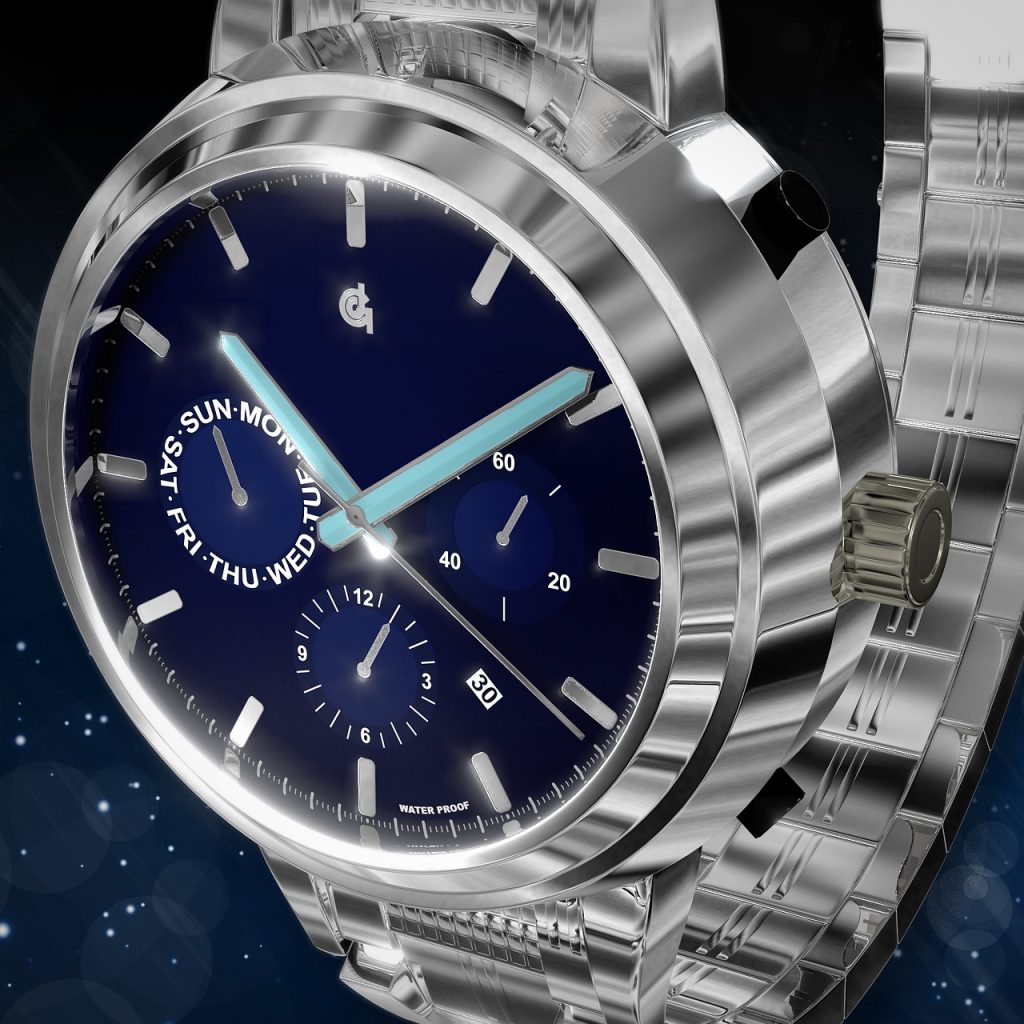
Virtual Reality Headsets
Introduction to Virtual Reality Headsets
Virtual Reality (VR) headsets are wearable devices that transport users to simulated environments, providing an immersive and interactive experience. These headsets combine high-definition displays, motion tracking sensors, and audio technologies to create a convincing virtual world that users can explore and interact with.
Main Purposes of Virtual Reality Headsets
Virtual Reality headsets serve a variety of purposes and offer unique experiences that go beyond traditional forms of entertainment and communication. Here are some main purposes of virtual reality headsets:
-
Gaming and entertainment: Virtual Reality gaming allows users to step into virtual worlds, providing a highly immersive and realistic gaming experience. Users can engage in interactive gameplay, explore new environments, and have a heightened sense of presence.
-
Training and simulations: Virtual Reality is increasingly used for training and simulations in various industries. From flight simulators for pilots to medical training for surgeons, VR headsets provide a safe and controlled environment for hands-on learning and skill development.
-
Architectural and design visualization: Architects and designers use virtual reality headsets to visualize and experience their designs before they are built. This allows for better understanding of spatial relationships, lighting, and overall design aesthetics.
-
Virtual tourism and exploration: Virtual reality headsets enable users to virtually visit and explore places they may not have the opportunity to visit physically. This includes historical sites, landmarks, and even other planets, providing educational and enriching experiences.
How Virtual Reality Headsets Work
Virtual reality headsets work by tricking the user’s senses into believing they are in a different reality. The key components and mechanisms of VR headsets include:
-
High-definition displays: VR headsets typically feature high-resolution displays for each eye, ensuring a clear and detailed visual experience. These displays help create the illusion of depth and three-dimensionality.
-
Motion tracking sensors: VR headsets employ various sensors, such as accelerometers and gyroscopes, to track the user’s head movements. This allows the display to update in real-time, adjusting the view according to the user’s changing perspective.
-
Field of view and immersion: VR headsets offer a wide field of view, encompassing the user’s vision and blocking out the external environment. This creates a sense of immersion and allows users to focus solely on the virtual world.
-
Audio immersion: VR headsets often come with built-in or external headphones to provide realistic audio cues and spatial sound. This further enhances the immersion by placing sounds in specific locations within the virtual environment.
-
Controllers and input devices: Many VR headsets come with handheld controllers or other input devices that allow users to interact with the virtual world. These controllers can mimic hand movements, enabling the manipulation of objects and other interactions.
Future Trends of Virtual Reality Headsets
The future of virtual reality headsets holds great promise in terms of technological advancements and expanding applications. Some potential future trends in virtual reality headsets include:
-
Wireless and standalone headsets: The trend towards wireless and standalone virtual reality headsets is likely to continue. These headsets eliminate the need for external devices or cables, providing greater freedom and convenience for users.
-
Eye-tracking and foveated rendering: Future virtual reality headsets may incorporate eye-tracking technology, allowing for more efficient rendering of graphics. This technique, known as foveated rendering, focuses rendering resources on the areas the user is looking at, reducing the overall computational load and improving performance.
-
Haptic feedback and sensory integration: Advancements in haptic feedback technologies may enable virtual reality headsets to provide tactile sensations, enhancing the sense of realism and immersion. This could involve providing subtle vibrations or pressure sensations on different parts of the body.
-
Augmented reality integration: The integration of augmented reality (AR) into virtual reality headsets could open up new possibilities for mixed reality experiences. This would allow users to overlay virtual objects onto the real world, creating a blended environment.
-
Social and collaborative VR experiences: Virtual reality headsets may offer more social and collaborative experiences, allowing multiple users to interact with each other in shared virtual environments. This could include virtual meetings, social gaming, or virtual classrooms.
The future of virtual reality headsets is likely to bring us even closer to fully immersive and realistic virtual experiences, revolutionizing not only entertainment but also various industries such as training, healthcare, and design visualization.
Health Concerns and Wearable Devices
Potential Health Risks with Wearable Devices
While wearable devices offer numerous benefits, it is important to be aware of potential health risks associated with their use. Some potential health risks include:
-
Skin irritation and allergies: Extended wear of certain wearable devices, especially those with bands or straps in direct contact with the skin, can cause skin irritation or allergic reactions. This is more common in individuals with sensitive skin or allergies.
-
Radiation exposure: Some wearable devices, such as smartwatches or fitness trackers, emit low levels of electromagnetic radiation. While studies have not yet established a direct link between wearable devices and adverse health effects, long-term exposure to radiation may have potential implications.
-
Eye strain and visual discomfort: Extended use of virtual reality headsets or prolonged focus on small screens of smartwatches can cause eye strain, headaches, and visual discomfort. It is important to take regular breaks and practice good eye health habits.
-
Distraction and reduced situational awareness: Wearable devices, particularly when used inappropriately or excessively, can distract users from their surroundings and reduce situational awareness. This can pose a risk, especially in situations that require focused attention, such as driving or operating heavy machinery.
Safety Measures When Using Wearable Devices
To minimize potential health risks and ensure safe use of wearable devices, consider the following safety measures:
-
Choose appropriate device and fit: Select wearable devices that are suitable for your lifestyle, needs, and comfort. Ensure that the size and fit are appropriate, preventing excessive pressure or discomfort.
-
Take breaks and limit usage: Avoid prolonged or continuous usage of wearable devices, especially those that involve extended screen time or virtual reality experiences. Take regular breaks to rest your eyes and reduce the risk of strain or discomfort.
-
Maintain hygiene and cleanliness: Keep wearable devices clean and dry to prevent skin irritation or infections. Follow the manufacturer’s instructions for cleaning and maintenance.
-
Follow usage guidelines: Familiarize yourself with the usage guidelines and safety instructions provided by the manufacturer. This includes guidelines for charging, water resistance, and any specific precautions for the device.
User Reviews on Health Issues with Wearable Devices
User reviews and feedback can provide valuable insights into any potential health issues or concerns associated with wearable devices. It is important to consider these reviews when making informed decisions about device usage and to address any emerging health issues.
User reviews often highlight specific concerns regarding comfort, skin irritation, or other health-related matters. While individual experiences may vary, it is helpful to understand common themes or patterns in user feedback to make an informed decision about device selection, usage, and precautions.
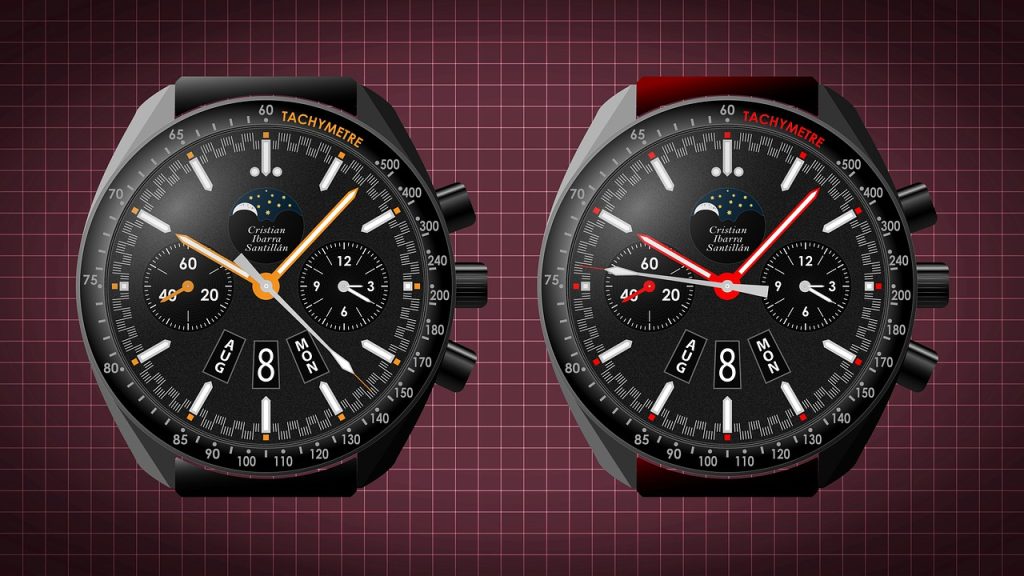
Data Privacy and Wearable Devices
Concerns Over Data Privacy
As wearable devices collect and transmit personal data, concerns over data privacy have emerged. Users may be worried about how their personal information is being used, stored, and shared by wearable device manufacturers or third-party entities.
Some common concerns regarding data privacy with wearable devices include:
-
Unauthorized access to personal data: There is a risk that personal data collected by wearable devices could be accessed by unauthorized individuals or entities. This can lead to privacy breaches and potential misuse of personal information.
-
Data tracking and surveillance: Wearable devices that track and collect data about users’ activities, location, or health parameters raise concerns about potential surveillance or tracking of individuals without their consent.
-
Data security and breaches: Wearable devices may store personal data locally or transmit it to servers or cloud storage. Inadequate security measures may make these devices vulnerable to data breaches, exposing users’ sensitive information to malicious actors.
Steps Taken by Manufacturers for Data Privacy
To address concerns over data privacy, many wearable device manufacturers have taken steps to prioritize and improve data security and user privacy. These steps may include:
-
Data encryption: Manufacturers implement data encryption protocols to secure the transmission of sensitive information between devices and servers. This helps prevent unauthorized access to personal data.
-
User consent and control: Manufacturers have introduced features that provide users with greater control over their personal data. This includes the ability to choose what data is collected, and options to opt-in or opt-out of certain data collection or sharing practices.
-
Privacy policies and transparency: Manufacturers often develop and maintain privacy policies that outline how personal data is collected, stored, and shared. This helps users understand how their data is being handled and provides transparency regarding data usage practices.
-
Collaboration with regulatory bodies: Manufacturers may work closely with regulatory bodies and adhere to industry standards and best practices regarding data privacy. This helps ensure compliance with applicable regulations and promotes responsible data handling practices.
Tips for Ensuring Data Privacy While Using Wearable Devices
To ensure data privacy while using wearable devices, consider the following tips:
-
Read privacy policies: Familiarize yourself with the privacy policies provided by the manufacturer to understand how your data is being handled and if any data sharing practices are in place.
-
Control data sharing settings: Explore the settings and options provided by the wearable device to choose what data is being collected and shared. Opt-out of data sharing practices that you are not comfortable with.
-
Keep software up to date: Manufacturers often release software updates that improve data security and address vulnerabilities. Ensure that your wearable device’s software is kept up to date to benefit from the latest security enhancements.
-
Use strong passwords and authentication methods: Enable security features such as passcodes or biometric authentication to prevent unauthorized access to your wearable device and the personal data it contains.
By implementing these measures, users can take proactive steps to protect their personal data and ensure the privacy and security of their wearable devices.
Future of Wearable Technology
Current Trends in Wearable Technology
Wearable technology continues to evolve at a rapid pace, driven by technological advancements and changing consumer demands. Some current trends in wearable technology include:
-
Health and wellness focus: Wearable devices are increasingly focusing on health and wellness applications, providing users with tools to monitor and manage their physical and mental well-being. This includes fitness trackers, smartwatches with health tracking features, and even devices that monitor sleep patterns and stress levels.
-
Integration with smartphones and other devices: Wearable devices are becoming more seamlessly integrated with smartphones and other devices. This integration enhances the user experience and expands the capabilities of wearable devices, allowing for greater convenience and functionality.
-
Fashion-forward design and customization: Wearable devices are now available in a wide range of styles, designs, and materials. Manufacturers are increasingly emphasizing fashion-forward designs and customization options to appeal to different consumer preferences and styles.
-
Focus on sustainability: With increasing environmental concerns, some wearable device manufacturers have started focusing on sustainability. This includes using eco-friendly materials, implementing efficient energy management, and offering recycling programs for device components.
Predictions for Upcoming Wearable Devices
The future of wearable technology holds numerous possibilities and exciting developments. Some predictions for upcoming wearable devices include:
-
Enhanced health monitoring capabilities: Wearable devices may introduce more advanced health monitoring features, such as continuous glucose monitoring for individuals with diabetes, hydration tracking, or even real-time monitoring of vital signs.
-
Stress management and mental health focus: As mental health awareness grows, wearable devices may incorporate features to help users manage stress levels, monitor mental well-being, and provide tools for relaxation or meditation.
-
Advanced augmented reality glasses: Augmented reality glasses could be the next major breakthrough in wearable technology. These glasses would overlay digital information onto the real world, providing users with a seamless augmented reality experience.
-
Flexible and foldable displays: Flexible and foldable displays may be incorporated into future wearable devices, allowing for more compact designs and greater portability. This would enable devices that can be easily folded or rolled up for storage or travel.
-
Energy harvesting and battery life improvements: Energy harvesting technologies, such as solar power or kinetic energy generation, may be integrated into wearable devices to extend battery life and reduce the need for frequent charging.
Possibilities for the Future of Wearable Devices
As wearable technology continues to advance, the possibilities for the future are virtually endless. Some potential future developments in wearable devices include:
-
Biometric authentication: Wearable devices may incorporate biometric authentication methods, such as fingerprint or iris scanning, for secure and convenient user verification.
-
Neural interfaces: The integration of wearable devices with neural interfaces or brain-computer interfaces could enable direct communication between the human brain and external devices. This would open up new possibilities for controlling devices using brain signals.
-
Smart fabrics and e-textiles: Future wearable devices may be integrated into smart fabrics or e-textiles, allowing for seamless integration of technology into clothing. This could include garments with embedded sensors, conductive threads, or energy harvesting capabilities.
-
Advanced artificial intelligence: Wearable devices may leverage advanced artificial intelligence algorithms to provide personalized recommendations, predictive insights, and adaptive functionalities. This would create a more intuitive and personalized user experience.
-
Health monitoring and disease prevention: Wearable devices could play a significant role in proactive health monitoring and disease prevention. These devices may detect early warning signs of various health conditions and provide personalized guidance and interventions.
The future of wearable devices is likely to bring about incredible advancements that will redefine how we interact with technology and enhance various aspects of our lives.

Consumer Trends and Attitudes Towards Wearable Devices
Understanding Consumer Preferences
Consumer preferences and attitudes towards wearable devices vary depending on individual needs, interests, and lifestyles. Some key factors that influence consumer preferences include:
-
Design and aesthetics: The design and aesthetics of wearable devices play a crucial role in consumer preferences. Many individuals prioritize wearable devices that complement their style and can be seamlessly integrated into their daily lives.
-
Functionality and features: Consumers look for wearable devices that offer a range of functionalities and features that align with their specific needs and interests. This includes fitness tracking capabilities, communication features, or entertainment options.
-
Brand reputation and trust: Consumers often look for reputable brands with a track record of quality and reliability when choosing wearable devices. Brand reputation and trust influence consumer confidence in the device’s performance, durability, and data privacy practices.
-
Affordability and value for money: Cost is an important consideration for many consumers. They seek wearable devices that offer a balance between affordability and value, ensuring that the features and capabilities justify the price.
Factors Influencing Consumer Behavior
Several factors influence consumer behavior and purchasing decisions when it comes to wearable devices. These factors include:
-
Technological advancements: Consumers are often drawn to wearable devices that incorporate the latest technological advancements, such as advanced sensors, improved battery life, or connectivity options.
-
Recommendations and reviews: Word-of-mouth recommendations and online reviews play a significant role in shaping consumer decisions. Positive reviews and endorsements from trusted sources can influence consumers to choose specific wearable devices.
-
User experience and ease of use: Consumers value wearable devices that offer a seamless and intuitive user experience. A device that is easy to set up, navigate, and integrate with other devices is more likely to appeal to consumers.
-
Price and affordability: Price sensitivity is a key consideration for many consumers. They seek wearable devices that offer a competitive price point without compromising on essential functionalities or quality.
-
Brand loyalty and familiarity: Brand loyalty and familiarity also influence consumer behavior. Consumers tend to stick with brands they trust and have had positive experiences with in the past.
Consumer Reviews and Feedback on Wearable Devices
Consumer reviews and feedback provide valuable insights into the performance, usability, and overall satisfaction levels of wearable devices. Reading consumer reviews can help potential buyers understand the strengths and weaknesses of different devices and make a more informed purchasing decision.
Consumer reviews often address various aspects of wearable devices, including design, comfort, battery life, accuracy of tracking, app integrations, and customer support. It is essential to consider multiple reviews to gain a comprehensive understanding of a device’s performance and user experience.
Analyzing consumer reviews and feedback can help manufacturers and developers address the concerns and preferences of consumers, improving future iterations of wearable devices.
Socio-Economic Impact of Wearable Devices
Impact on Health and Fitness Industry
Wearable devices have had a profound impact on the health and fitness industry, transforming the way individuals monitor and manage their well-being. The key socio-economic impacts of wearable devices on the health and fitness industry include:
-
Empowering individuals: Wearable devices give individuals greater control over their health and fitness by providing real-time data and insights. This empowers individuals to make informed decisions about their lifestyle, exercise routines, and overall well-being.
-
Improved health outcomes: By tracking and analyzing health metrics, wearable devices enable users to proactively manage their health. This can lead to improved health outcomes, better disease management, and a reduced risk of chronic conditions.
-
Shift towards preventive care: Wearable devices promote a shift towards preventive care by encouraging individuals to lead healthier lifestyles. These devices provide nudges and reminders to stay active, monitor sleep patterns, and maintain good overall health.
-
Behavior change and motivation: Wearable devices use gamification techniques and personalized feedback to motivate users to engage in healthier behaviors. By turning health and fitness goals into achievable milestones, these devices can drive behavior change and promote adherence to healthy habits.
Role in Assistive Technology and Special Needs
Wearable devices play a crucial role in assistive technology, supporting individuals with special needs and disabilities. The socio-economic impact of wearable devices in this domain includes:
-
Increased independence: Wearable devices, such as assistive hearing devices or smart glasses, can enhance the independence of individuals with sensory impairments. These devices provide access to information, improve communication, and facilitate daily activities.
-
Accessible communication: Wearable devices enable individuals with speech or language difficulties to communicate more effectively. Devices like smartwatches or eye-tracking devices can be used to input text or generate speech, facilitating communication in various settings.
-
Empowering individuals with mobility challenges: Wearable exoskeletons and powered suits assist individuals with mobility challenges, providing support and enabling greater mobility. These devices enhance individuals’ ability to perform daily activities and participate in society.
-
Enhanced quality of life: Wearable devices can improve the quality of life for individuals with special needs, allowing them to access education, employment, and social opportunities that may otherwise be challenging. These devices foster inclusion and empower individuals to overcome barriers.
Influence on the Economy and Employment
The proliferation of wearable devices has had a significant impact on the economy and employment, creating new opportunities and shaping industries. The socio-economic impact of wearable devices on the economy and employment includes:
-
Job creation: The wearable technology industry has created numerous job opportunities, including manufacturing, software development, data analysis, marketing, and customer support. This has stimulated economic growth and contributed to job creation in various sectors.
-
Market growth and revenue: The increasing demand for wearable devices has led to market growth and increased revenue for manufacturers, retailers, and service providers. This economic growth has a multiplier effect, benefiting other industries and the overall economy.
-
Innovation and entrepreneurship: The wearable technology industry fosters innovation and entrepreneurship, driving advancements in technology and opening up new avenues for startups and small businesses. This creates a competitive ecosystem that fuels further growth and development.
-
Transforming industries: Wearable devices have transformed industries such as healthcare, fitness, entertainment, and even manufacturing. This has led to increased efficiency, productivity, and innovation within these industries, contributing to economic development.
As wearable technology continues to evolve and gain widespread adoption, its socio-economic impact is likely to grow, shaping industries, creating new opportunities, and improving the overall well-being of individuals.
